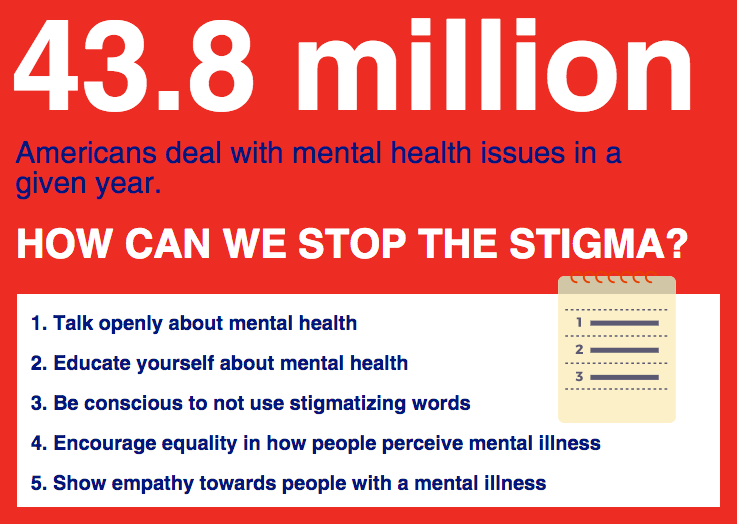Ending the Mental Health Stigma
Mental health is a topic that has recently been more and more discussed as many people are starting to realize that it is more common that one might think. Even though there have been efforts to decrease the stigma, it is still very prevalent in our everyday lives.
According to Dictionary.com, a stigma is defined as a mark of disgrace associated with a particular circumstance, quality, or person. In other words, a stigma is something that is constructed in society and has nothing to do with the person themselves. Many people get their information about mental illness from the mass media, which, more often than not, portrays mental illness either inaccurately or negatively, according to Pasadena Villa.
One of the main aspects in mass media that perpetuates the mental health stigma is the many stories and shows that portray people with mental illness in a violent way, causing people to believe that they are unpredictable and scary people to be around. In fact, according to Pasadena Villa, research shows that people with mental illness are more likely to be victims of violence, rather than perpetrators.
Another way that people perpetrate the stigma surrounding mental illness, is that many people believe the proportion of the population that have a mental illness is very small. When, in fact, there are 43.8 million people in the U.S that struggle with mental illness, which is 18.6% of the population, according to Pasadena Villa. While this number is still not the majority of people, it is still a significant number to pay attention to. Mental illness is not a rare disease that only that only affects a few people. Mental illness affects almost everyone, whether they experience it themselves or they know someone who it affects.
Senior Melanie Iversen had a lot to say about her experiences with the stigma surrounding mental illness.
“What I’ve found that causes a lot of the stigma is that mental illness is often viewed as somebody exaggerating their experiences for attention or because of their selfishness, but it really isn’t anything close to that,” Iversen said.
According to WebMD, mental illness can have many causes, but more often than not, it is caused by biological factors rather than dispositional factors. Many mental illnesses are caused by either an excess or a lack of a certain neurotransmitter.
To overcome this stigma, or at least help to decrease it, there are many things we, as a society, can do. According to the National Alliance of Mental Health, there are nine steps to take to help decrease the stigma. The first is to talk openly about mental health. By having conversations about mental health it can become less of an “off limits” topic. The second step is to educate yourself and others about mental health. There are many educational resources that can help you learn more about the causes and effects of mental illnesses. The third step is to be conscious of your language. Try not to use stigmatizing words such as “retard”, as this only perpetuates the stigma.
“I think [the stigma] can be changed through teaching that mental illness is a diagnosable, treatable illness that isn’t a choice,” Iversen said.






















































